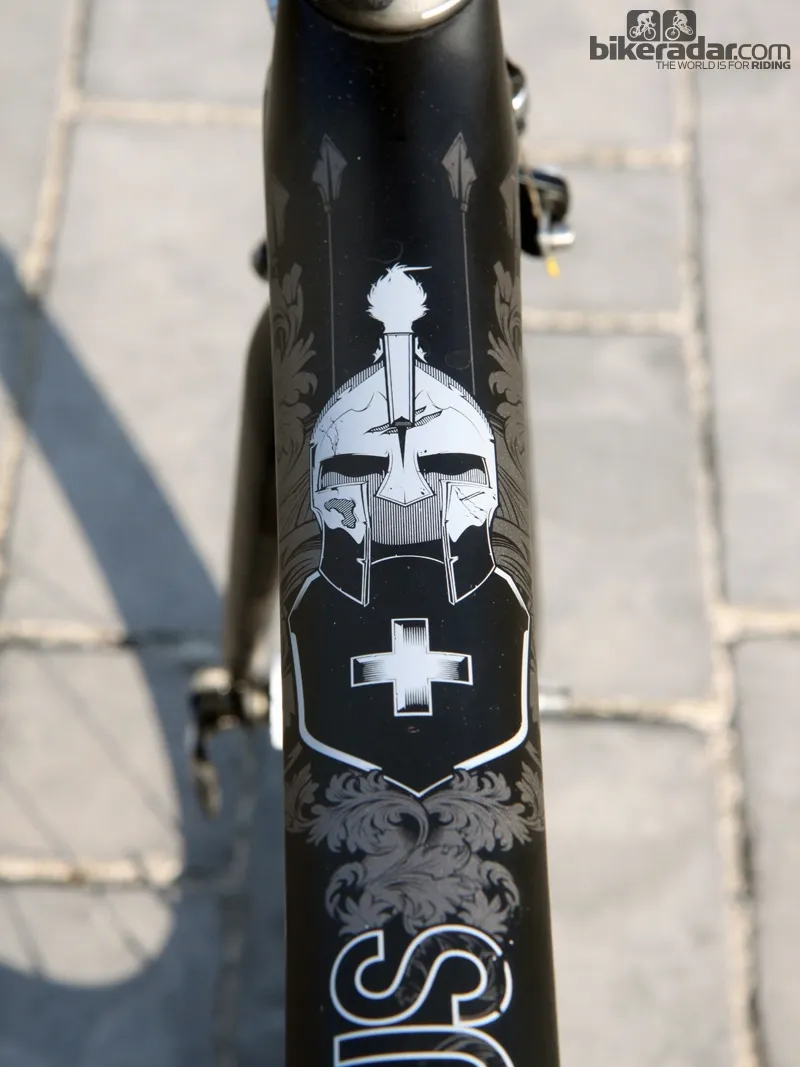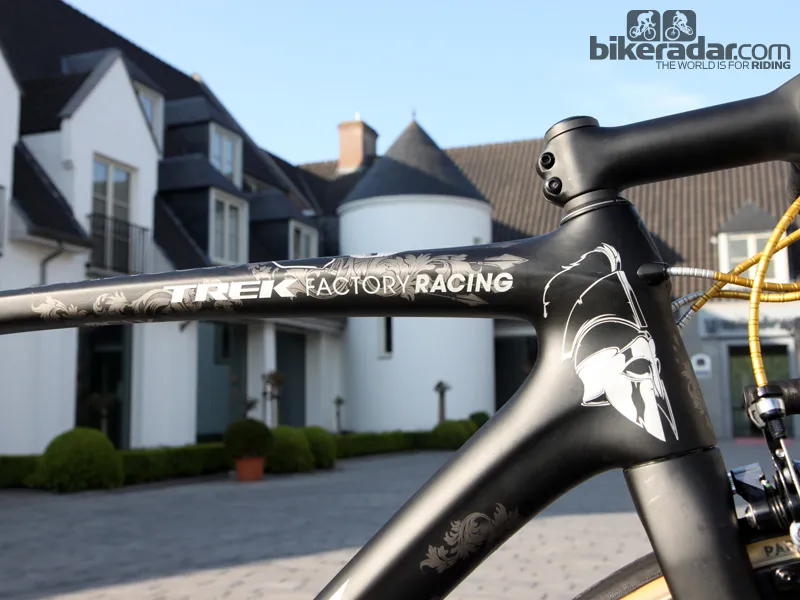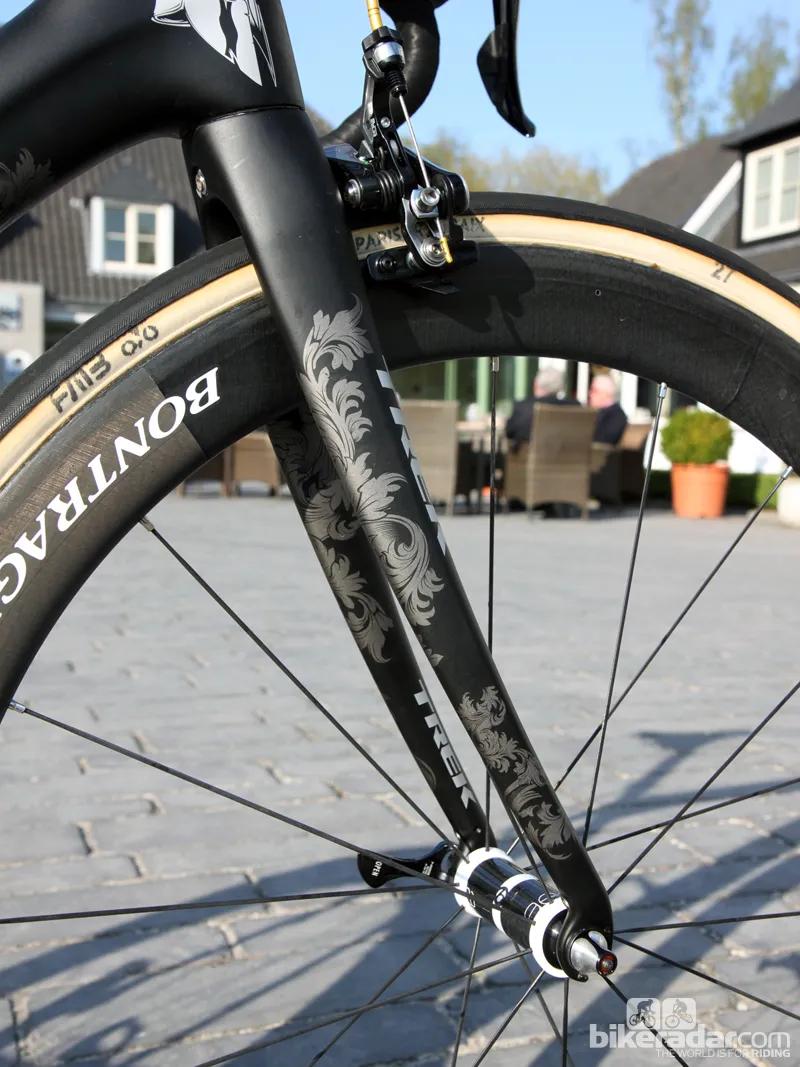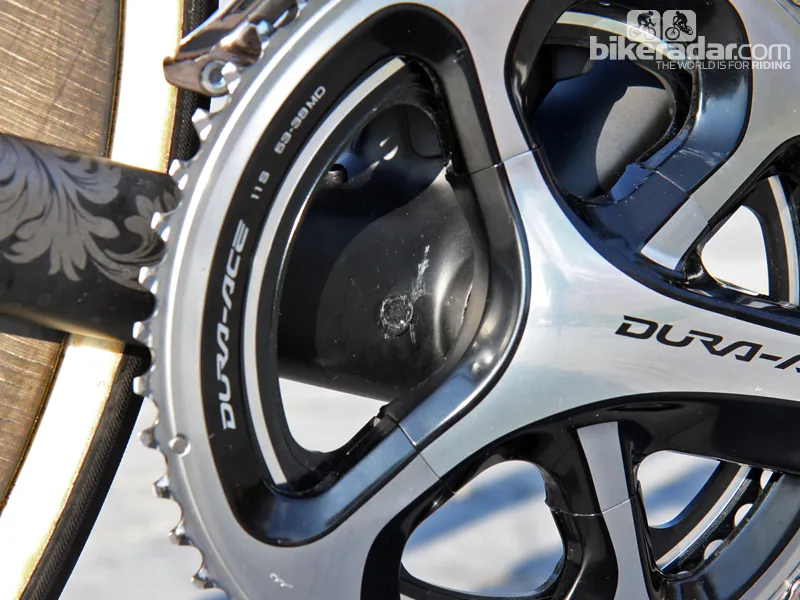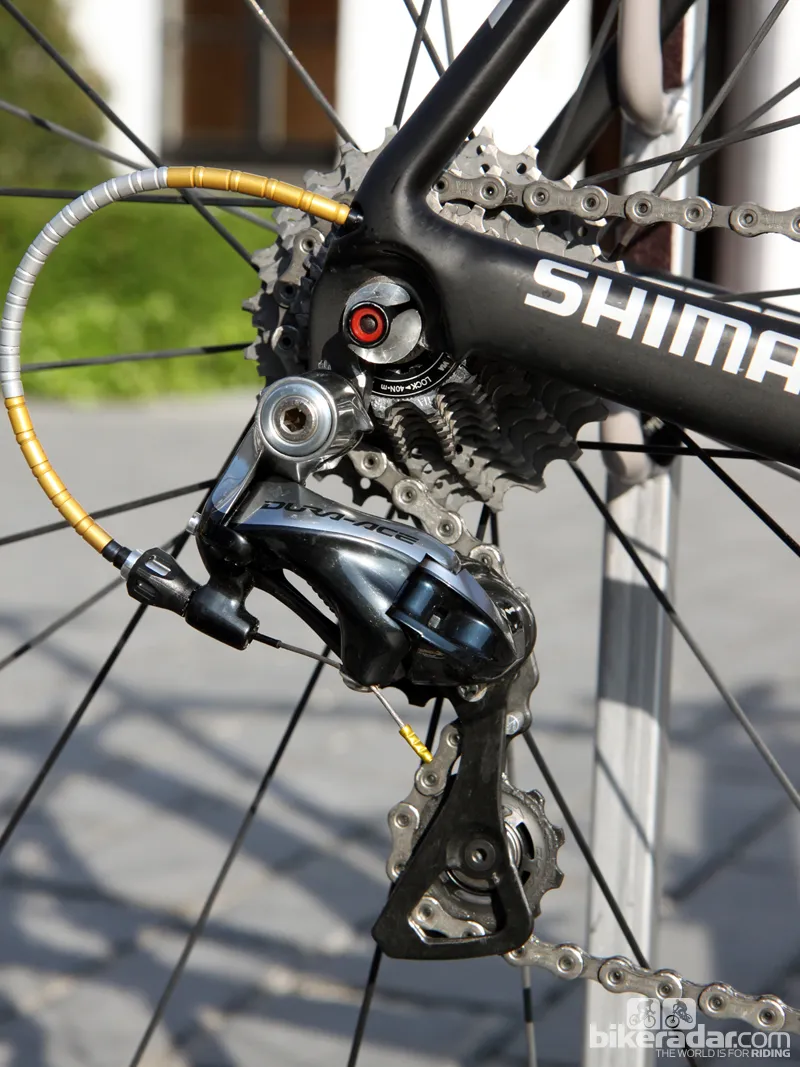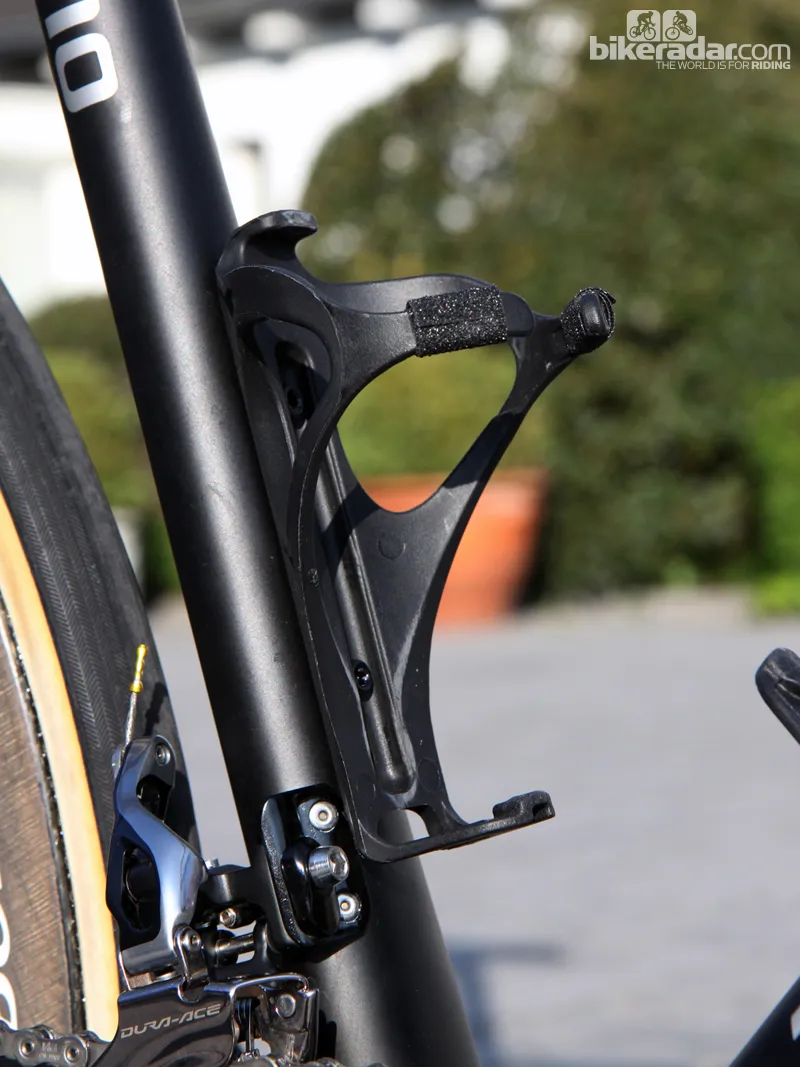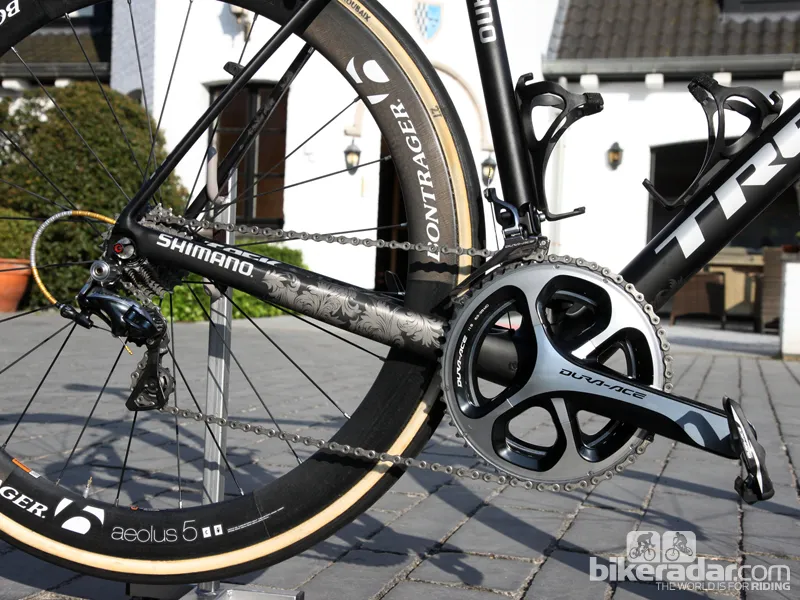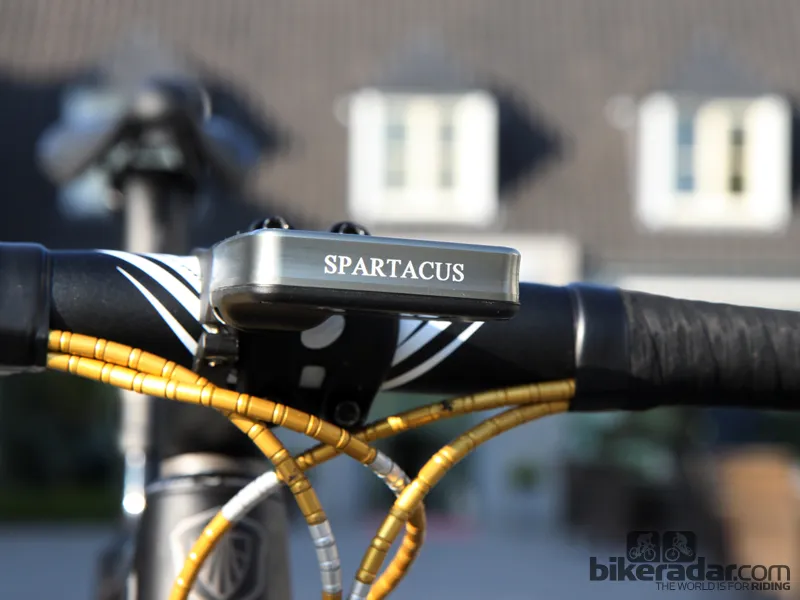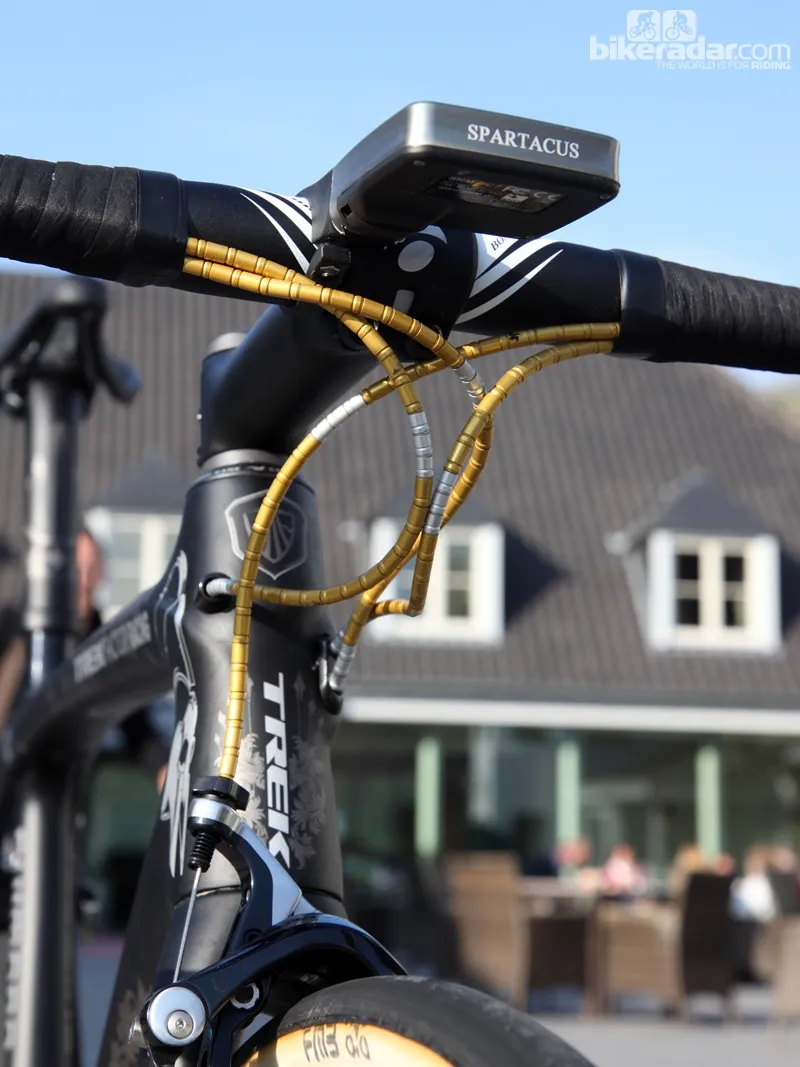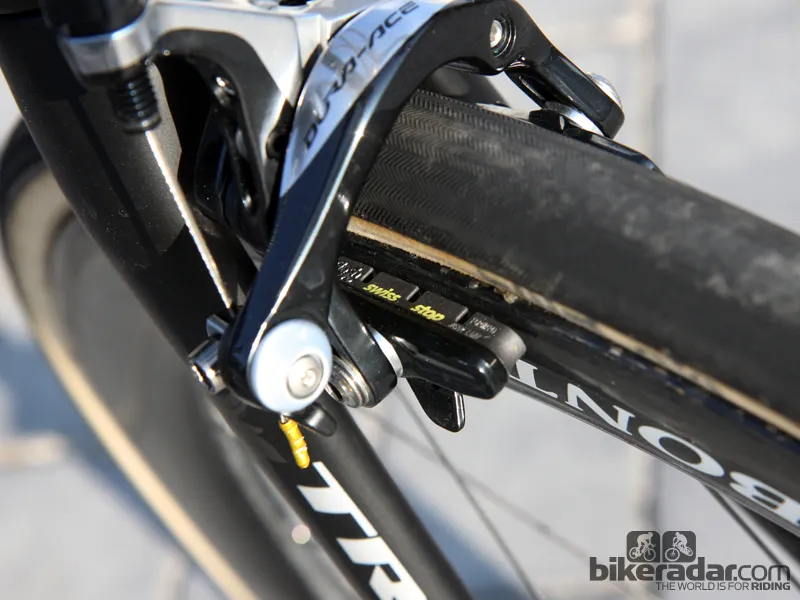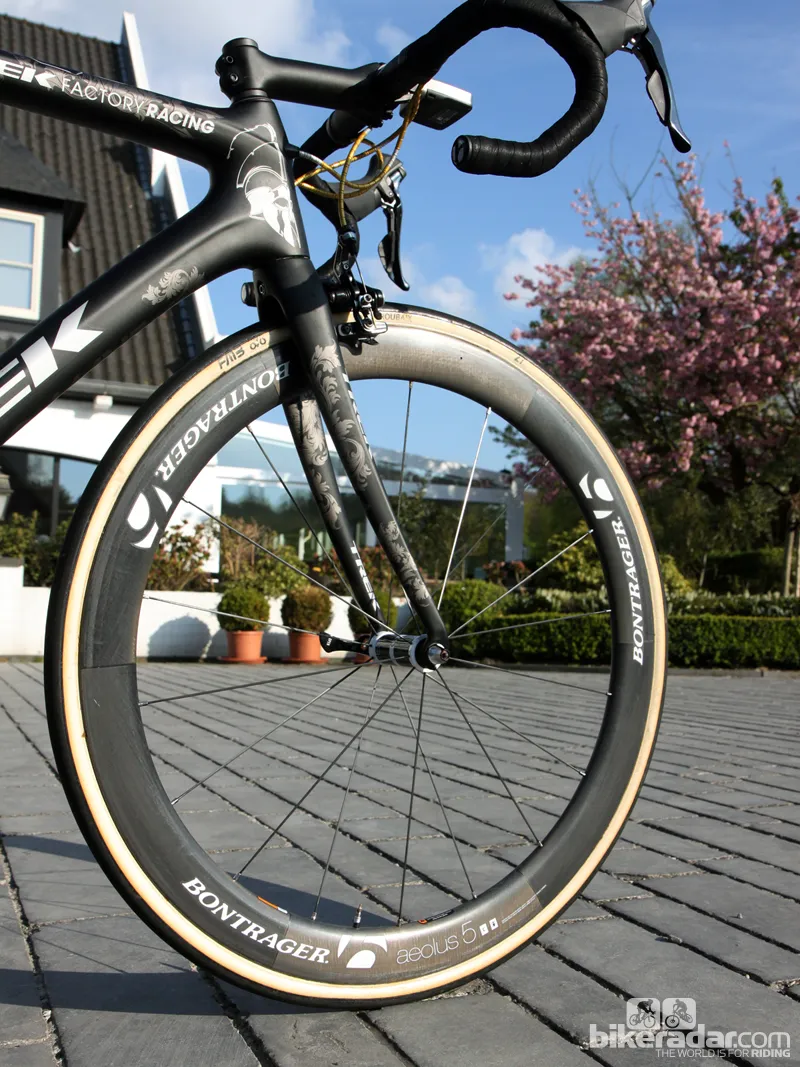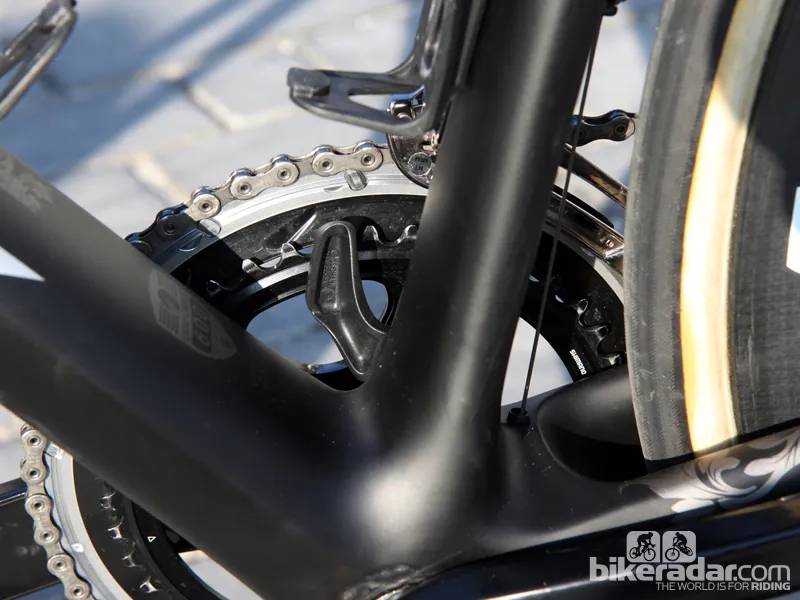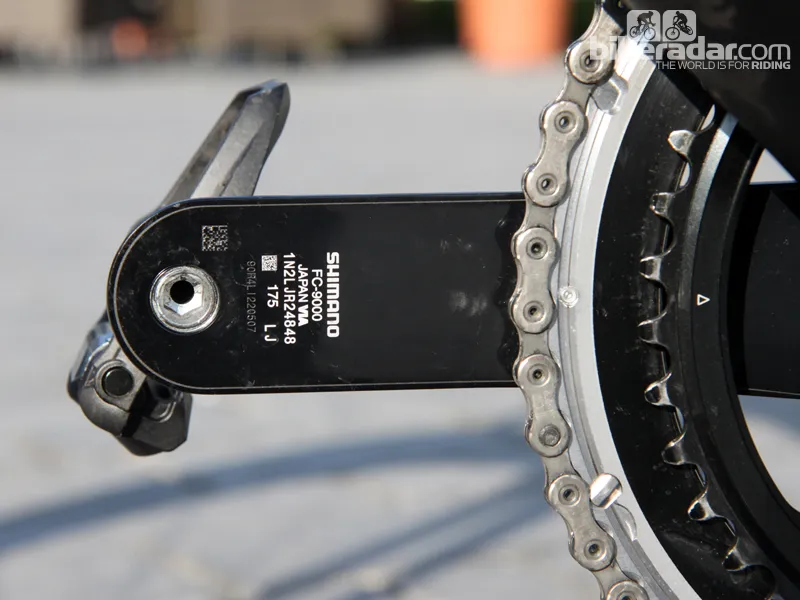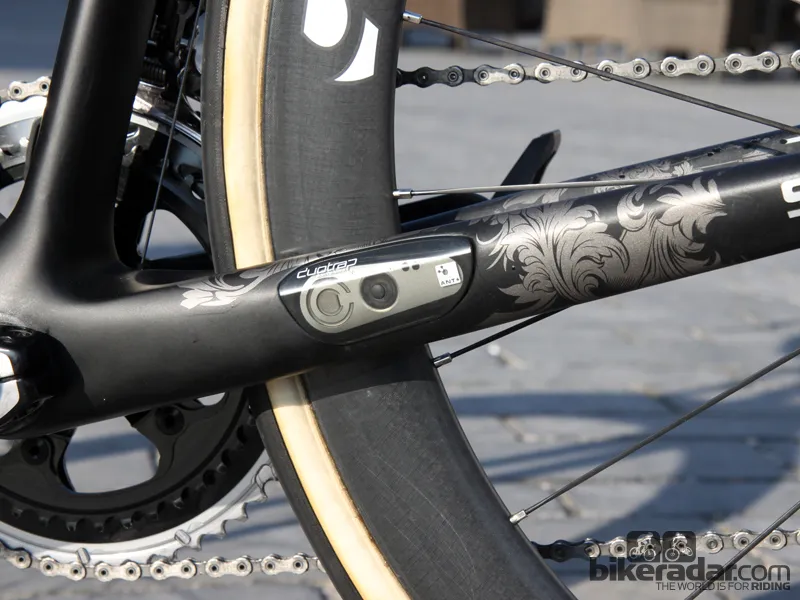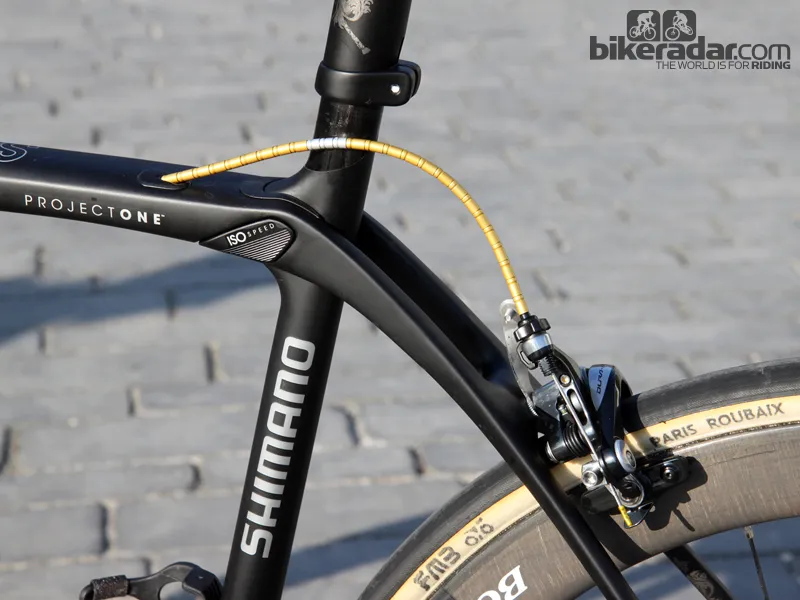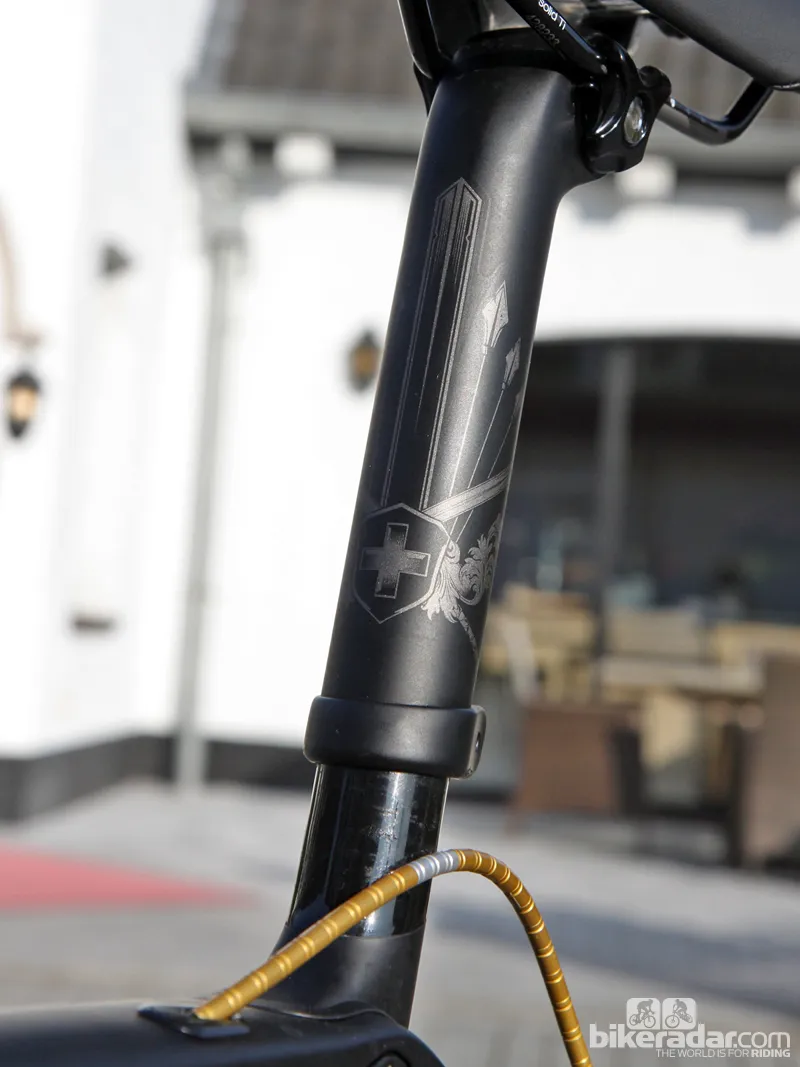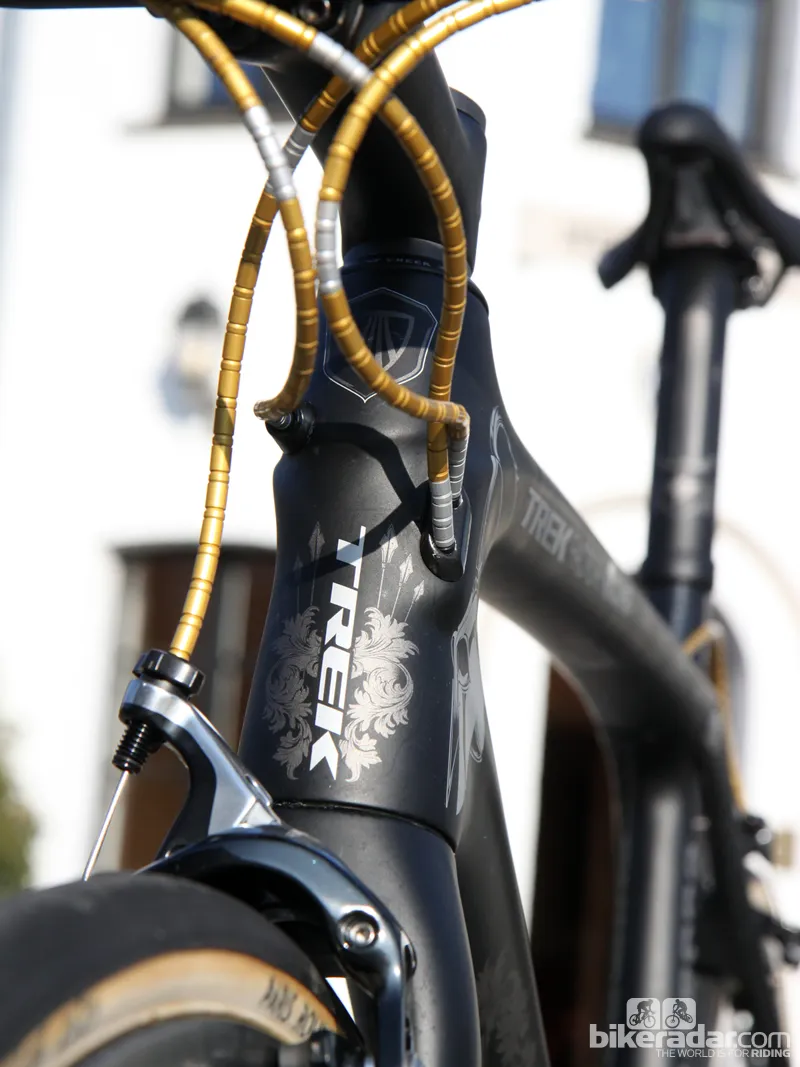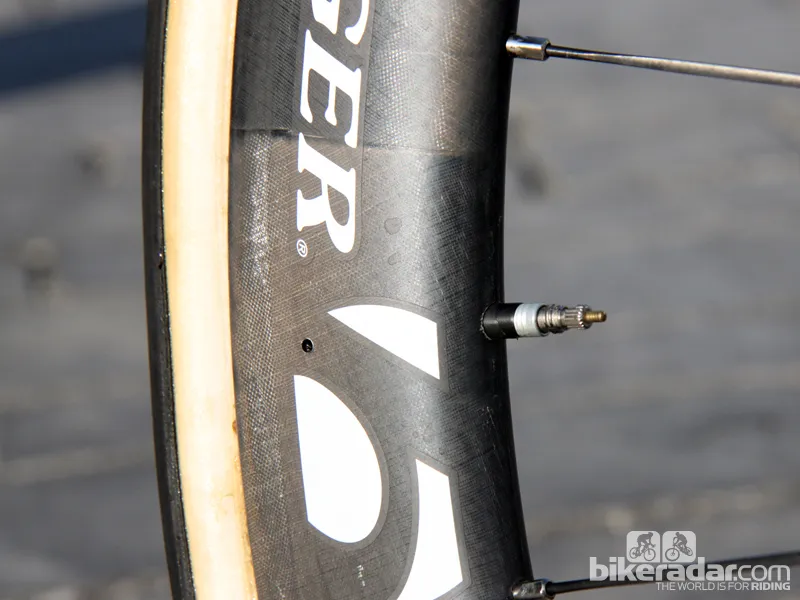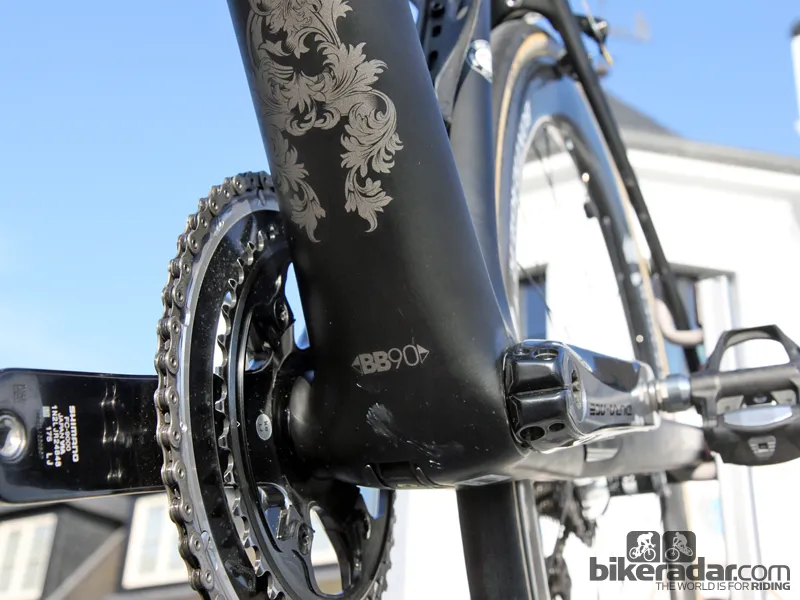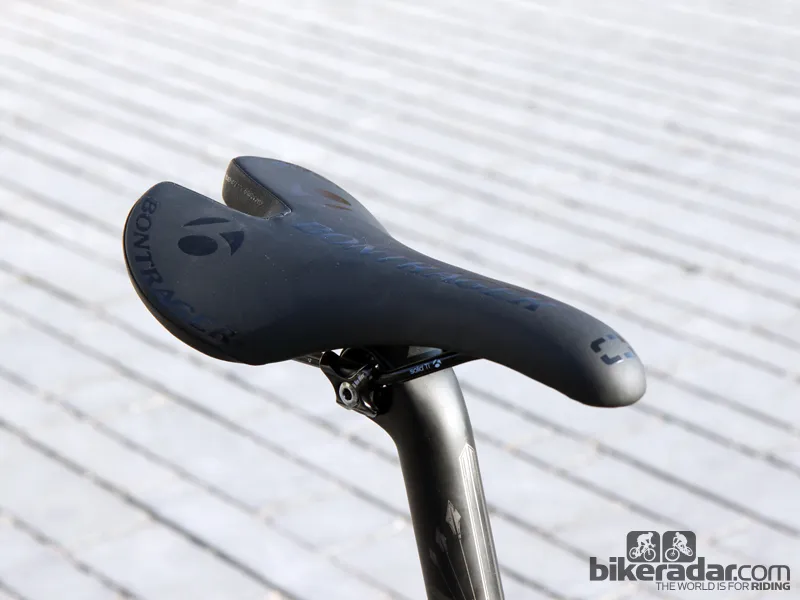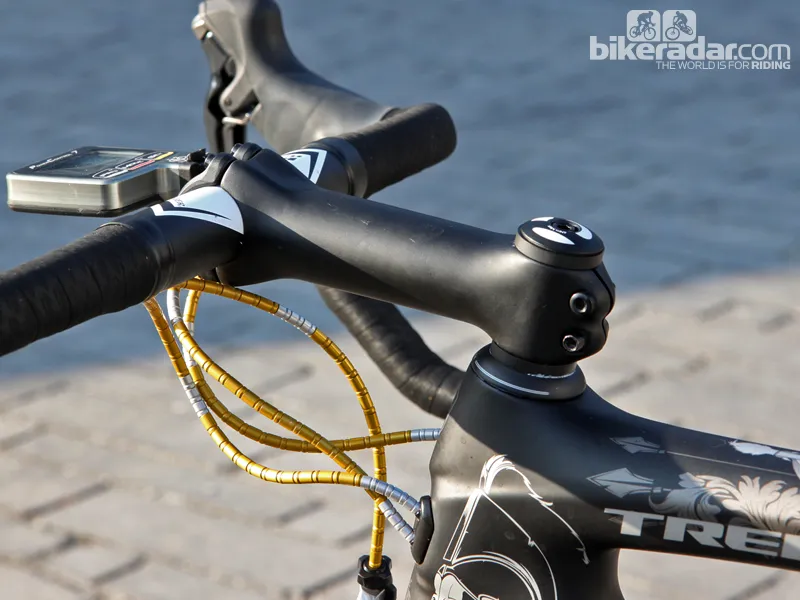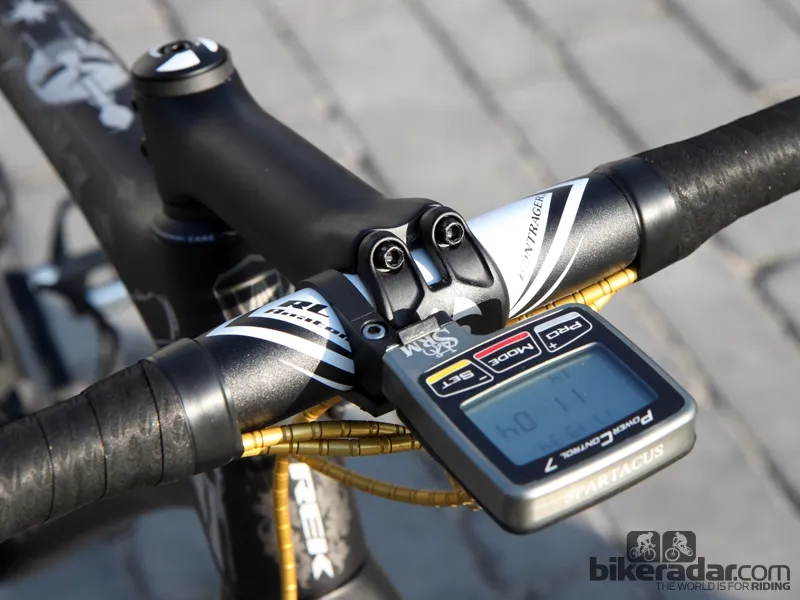As the saying goes, "don't fix it if it ain't broken." Save for just the slightest of tweaks, Fabian Cancellara (Trek Factory Racing) will race across the pavé of Paris-Roubaix on the same Trek Domane Classics he used to win the event last year. Apparently this suit of armor works for 'Spartacus' just fine.
To the casual observer, Cancellara's bike is the same one as last year but if you look a bit closer, there are a few minor differences. The graphics now reflect the new team name on the top tube and his trademark Berner carbon fiber rear derailleur cage and oversized pulleys have been traded in for the standard Shimano Dura-Ace setup – a move team technical director Jordan Roessingh says was done in the interest of slightly improved chain security on the cobbles.
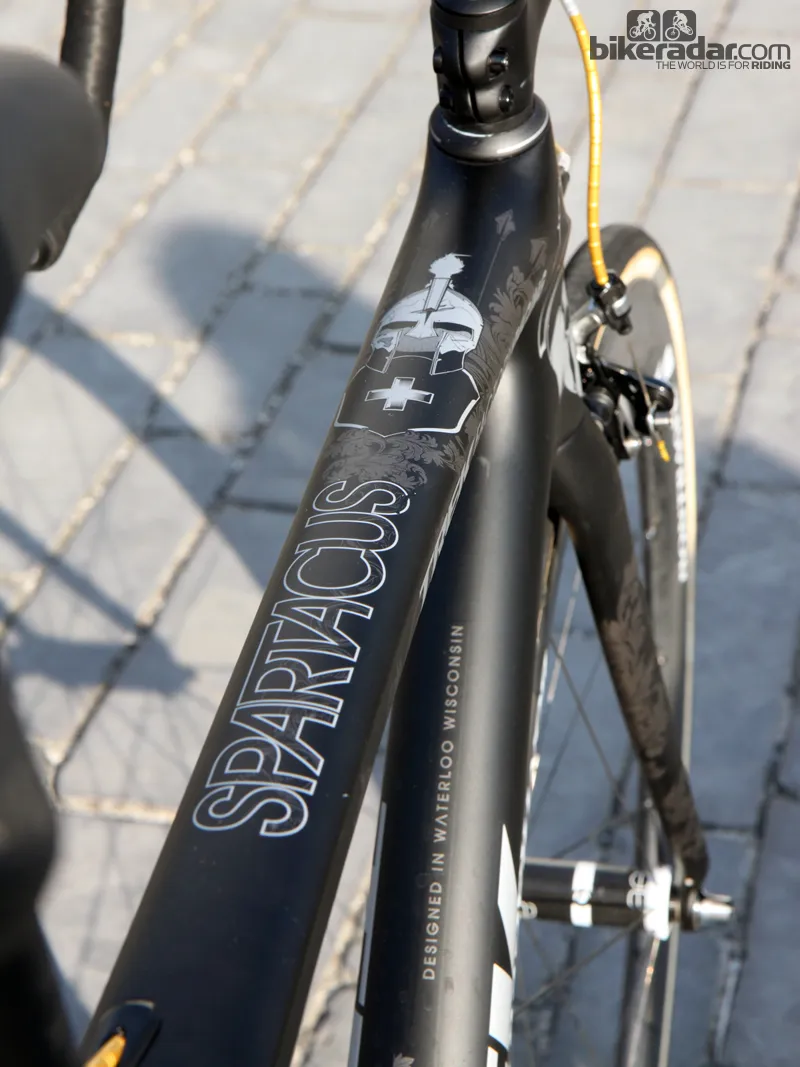
Cancellara has also switched from his long-running Speedplay Zero pedals to carbon-bodied Shimano Dura-Ace ones but otherwise, it's business as usual – or so it would seem.
As it turns out, we've been duped in saying that Cancellara's bikes for Ronde van Vlaanderen and Paris-Roubaix were identical to each other – as was every other media outlet that has profiled his classics machines, as far as we can tell. It's only once you very carefully inspect the two bikes that you being to notice the differences.
Cancellara's bike for Paris-Roubaix is essentially what Trek offers to the public as the Domane Classics, with the same bump-eating IsoSpeed pivoting seat cluster as on the stock version but with 25mm of additional reach and a whopping 50mm less stack height. Handling is also a bit quicker than standard Domanes while still retaining a little extra stability as compared to the Trek Madone platform, plus there's room for fat 27mm-wide tubulars.
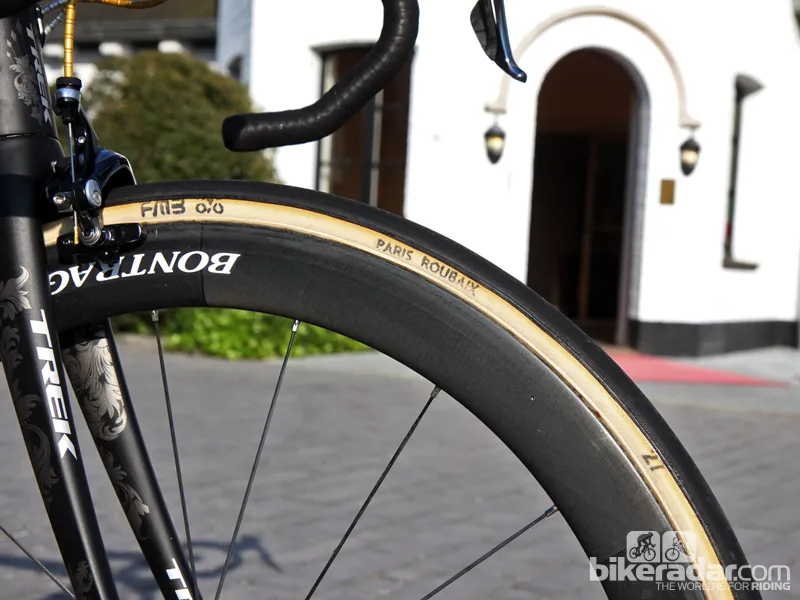
However, the bike Cancellara uses for Ronde van Vlaanderen – and for nearly every other race during the season – is an entirely different beast with geometry that more closely mimics a standard Madone.
The chain stays are about 20mm shorter, the bottom bracket is about 10mm higher, the head tube is 7mm longer, and the front center is approximately 25mm tighter (apparently via a steeper head tube angle and shorter-rake fork).
In effect, this means that Spartacus usually races a bike that rides like a Domane but handles like a Madone, and if that sounds appealing, you're not alone.
Trek officials wouldn't completely confirm our findings but they did say that they'll offer the Domane-Madone hybrid to the public by the end of the year.
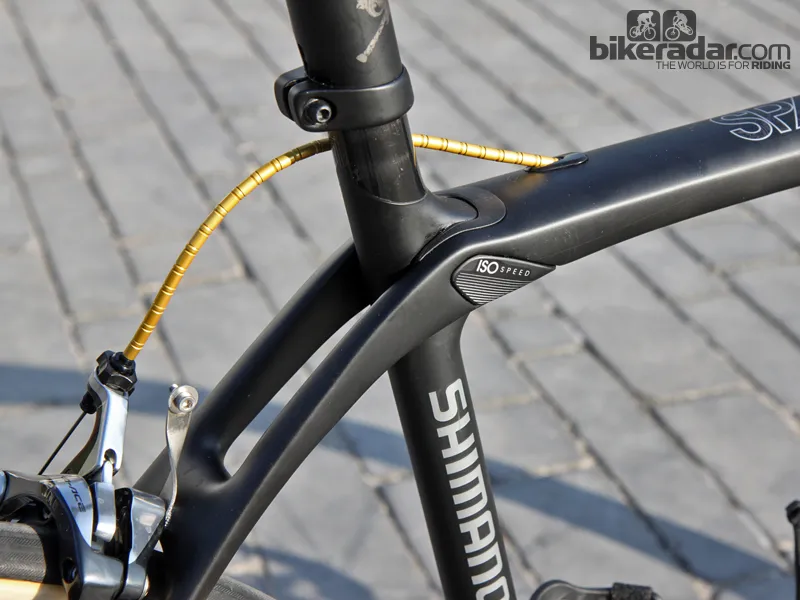
Cancellara's bikes otherwise share nearly everything. Like at Ronde van Vlaanderen, his Paris-Roubaix bike goes battery-free, save for the SRM PowerControl 7 computer head. The Shimano Dura-Ace STI Dual Control levers are connected to the derailleurs with actual braided steel cables and there's no power meter present. Cancellera prefers to race on 'feel' and no one is going to argue with that approach as it's served him very well so far.
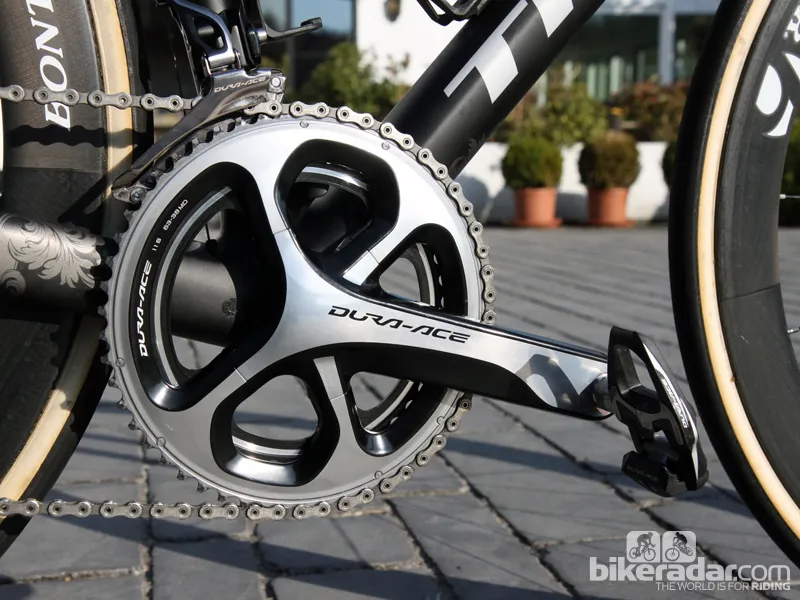
Cancellara also goes against the grain with his 42-tooth inner chainring and single-wrapped Bontrager RL Anatomic aluminum handlebar whereas many of his competitors are using 44- or 46-tooth rings and lots of extra padding to cushion their hands.
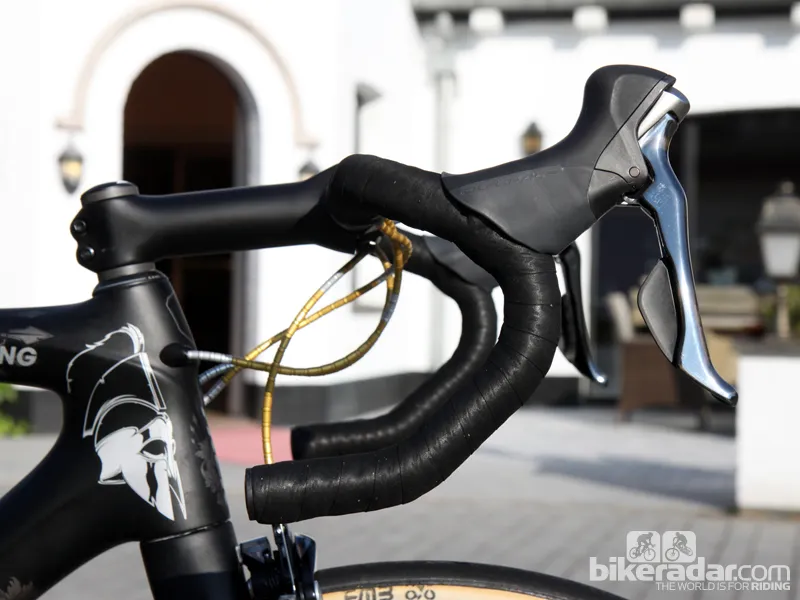
"He likes to feel the bike," said Roessingh in regards to the tape, a 'feel' that most mere mortals would describe as pain. Roessingh also says that despite Cancellara's copious wattage, the big Swiss rider prefers to use a high cadence instead of brute force. "He's a spinner [and] it's not just [for] Roubaix."
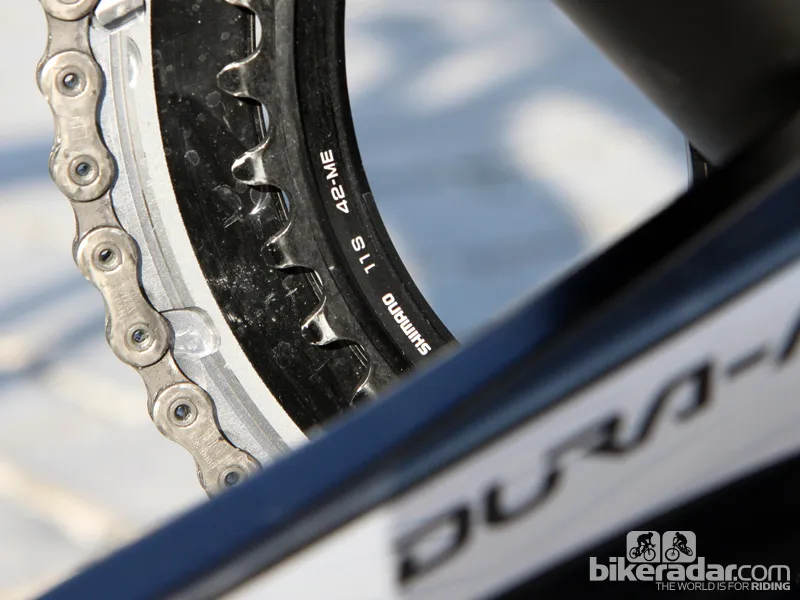
About the only concessions Cancellara has made to tackle the cobbles are in his rolling stock. Once again, he'll rip across the pavé on 27mm-wide FMB Paris-Roubaix handmade cotton tubulars glued to Bontrager Aeolus 5 D3 Classics carbon wheels, which feature a larger-diameter tire bed to provide a better interface for the high-volume tires.
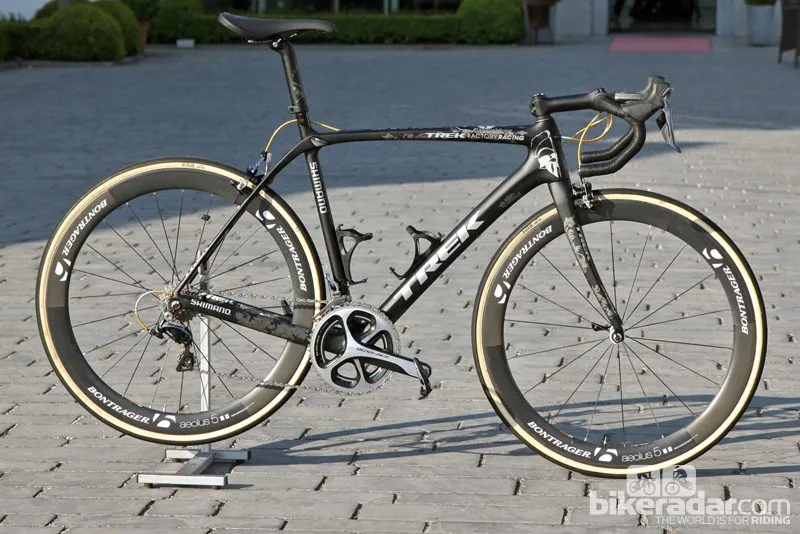
Total weight as pictured is 7.68kg (16.93lb).
Complete bike specifications
- Frame: Trek Domane Classics, 58cm 'Pro fit'
- Fork: Trek IsoSpeed carbon
- Headset: Cane Creek, 1 1/8-to-1 1/2" tapered
- Stem: Bontrager Race XXX Lite, 140mm x -7°
- Handlebar: Bontrager RL Anatomic, 44cm (center-to-center)
- Tape: Bontrager cork
- Front brake: Shimano Dura-Ace BR-9000 w/ SwissStop carbon-specific pads
- Rear brake: Shimano Dura-Ace BR-9000 w/ SwissStop carbon-specific pads
- Brake levers: Shimano Dura-Ace STI Dual Control ST-9000
- Front derailleur: Shimano Dura-Ace FD-9000
- Rear derailleur: Shimano Dura-Ace RD-9000
- Shift levers: Shimano Dura-Ace STI Dual Control ST-9000
- Cassette: Shimano Dura-Ace CS-9000, 11-25T
- Chain: Shimano Dura-Ace CN-9000
- Crankset: Shimano Dura-Ace FC-9000, 175mm, 53/42T
- Bottom bracket: CeramicSpeed
- Pedals: Shimano Dura-Ace SPD-SL PD-9000
- Wheelset: Bontrager Aeolus 5 D3 Classics tubular
- Front tire: FMB Paris-Roubaix tubular, 27mm
- Rear tire: FMB Paris-Roubaix tubular, 27mm
- Saddle: Bontrager Team Issue
- Seatpost: Bontrager Ride-Tuned Carbon seatmast
- Bottle cages: Trek BAT Cage (2)
- Other accessories: SRM PowerControl 7 computer, Nokon derailleur and brake housing
Critical measurements
- Rider's height: 1.86m (6ft 1in)
- Rider's weight: 82kg (181lb)
- Saddle height from BB, c-t: 788mm
- Saddle setback: 90mm
- Seat tube length (c-t): 500mm
- Seat tube length (c-c): 485mm
- Tip of saddle nose to center of bars (next to stem): 630mm
- Saddle-to-bar drop: 120mm
- Head tube length: 143mm
- Top tube length (effective): 577mm
- Weight: 7.68kg (16.93lb, with computer and cages)
